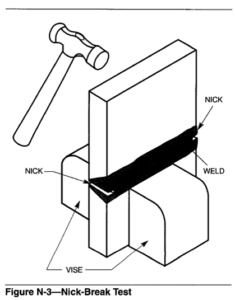(Chemical symbol: Ni). A silvery white, hard, malleable, ductile metallic element, resistant to corrosion, used mainly in alloys and also as a catalyst. It is magnetic, a fair conductor of electricity, and belongs to the iron-cobalt group of elements. Atomic weight, 58.69; specific gravity, 8.90; melting point, 1453°C (2647°F).
Nickel adds ductility when alloyed with steel, lowers the critical point for heat treatment, aids fatigue strength, and increases notch toughness.

Nickel is used as an alloying agent in steel to increase strength and toughness at low temperatures. Most nickel additions are from 1 to 4%, although in some applications, the nickel content runs as high as 36% or more. In all cases, the addition of nickel will increase the strength without decreasing the toughness of the steel. Steels with a nickel content of 24% have reduced magnetism. When the nickel content is increased to 36%, the steel has a very small coefficient of expansion due to heat (up to 482°C [900oF]).
